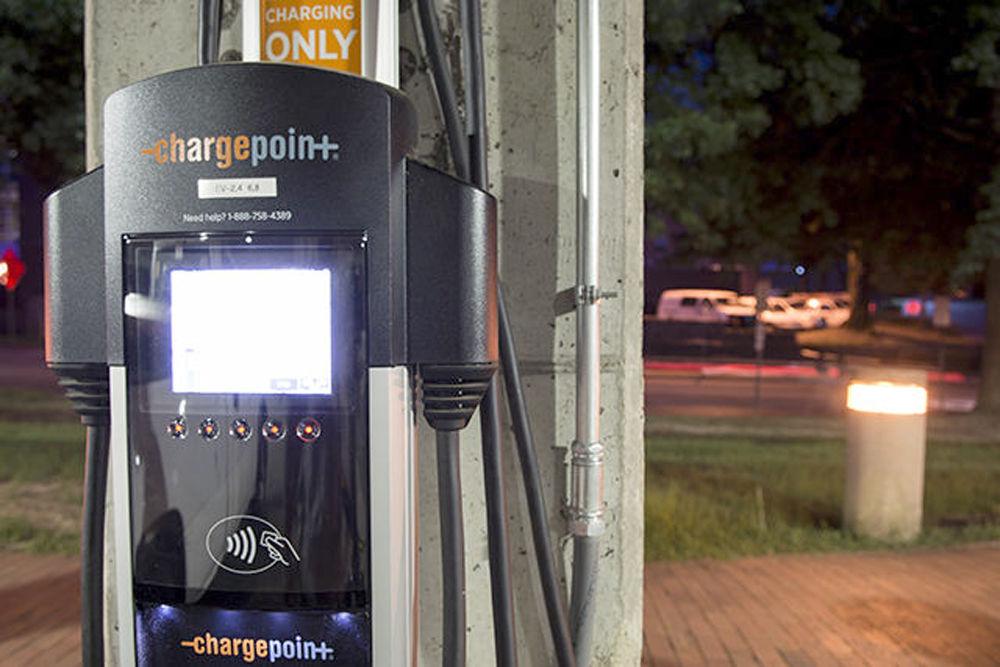A team of researchers at NC State have developed a new charger for electric vehicles that is smaller and more efficient than existing technologies.
The charger is called a medium-voltage fast charger, or MVFC, and the team includes electrical and computer engineering research assistant professor Srdjan Srdic, electrical and computer engineering assistant professor Srdjan Lukic and graduate research assistants Xinyu Liang and Chi Zhang.
According to Srdic, the MVFC prototype charges with 50 kilowatts and is 10 times smaller than current systems.
“The typical system today would have a transformer plus a charger,” Srdic said. “We were able to connect directly to a medium-voltage line and totally eliminate the transformer. This was one of the things that enabled us to have a much smaller system. It also allowed for easier installation and lower installation costs.”
Srdic also explained how the use of silicon carbide-based semiconductor devices, a powerful material that has allowed the team of researchers to create an efficient charger, is what sets the MVFC apart from other electric vehicle chargers that use silicon-based devices.
“We used silicon carbide-based devices, which have much smaller power losses and can operate at higher switching frequencies than silicon devices,” Srdic said. “This means that we can have a more efficient charger and reduce the size of our system even more by reducing the size of inductors and transformers used.”
Liang described the main advantage of silicon carbide as bettering the performance of the electric vehicle charger.
“The efficiency increases,” Liang said. “The volume decreases, and the weight also decreases. This material provided a revolutionary change of power electronics. The traditional electric vehicle fast charger has a volume similar to a fridge. It is very big. By using silicon carbide devices, we are able to shrink the size down.”
According to Srdic, the smaller size of the MVFC does not interfere with its performance. In fact, it gets more power. The project was funded through PowerAmerica, a next-generation power electronics institute headquartered at NC State, whose mission is to advance wide bandgap power technology.
Zhang believes that much of the success of this project can be attributed to where they conducted their research, the Future Renewable Electric Energy Delivery and Management (FREEDM) Systems Engineering Research Center.
“The FREEDM Center is a great center that focuses on power electronics and power systems and has a huge lab,” Zhang said. “It provided all of the equipment, sources, power supplies and helped us to do our tasks safely and efficiently.”
Liang expressed the team’s hope to have the MVFC available to the market as soon as possible because of industrial partners that are interested in the concept.
The research on MVFC began in 2015, and the team hopes that the MVFC will be released into the market in the next few years. Efforts funded by the U.S. Department of Energy, which parallels the work of this team, have started.
Zhang believes that the MVFC will benefit NC State by opening up new opportunities for additional projects for students interested in electrical engineering.
“More students can be funded by PowerAmerica or the U.S. Department of Energy because of this new technology,” Zhang said. “More Ph.D. or master’s students can work in this area. More importantly, because this technology can be used in the industry, I think that is a huge benefit to everyone.”








